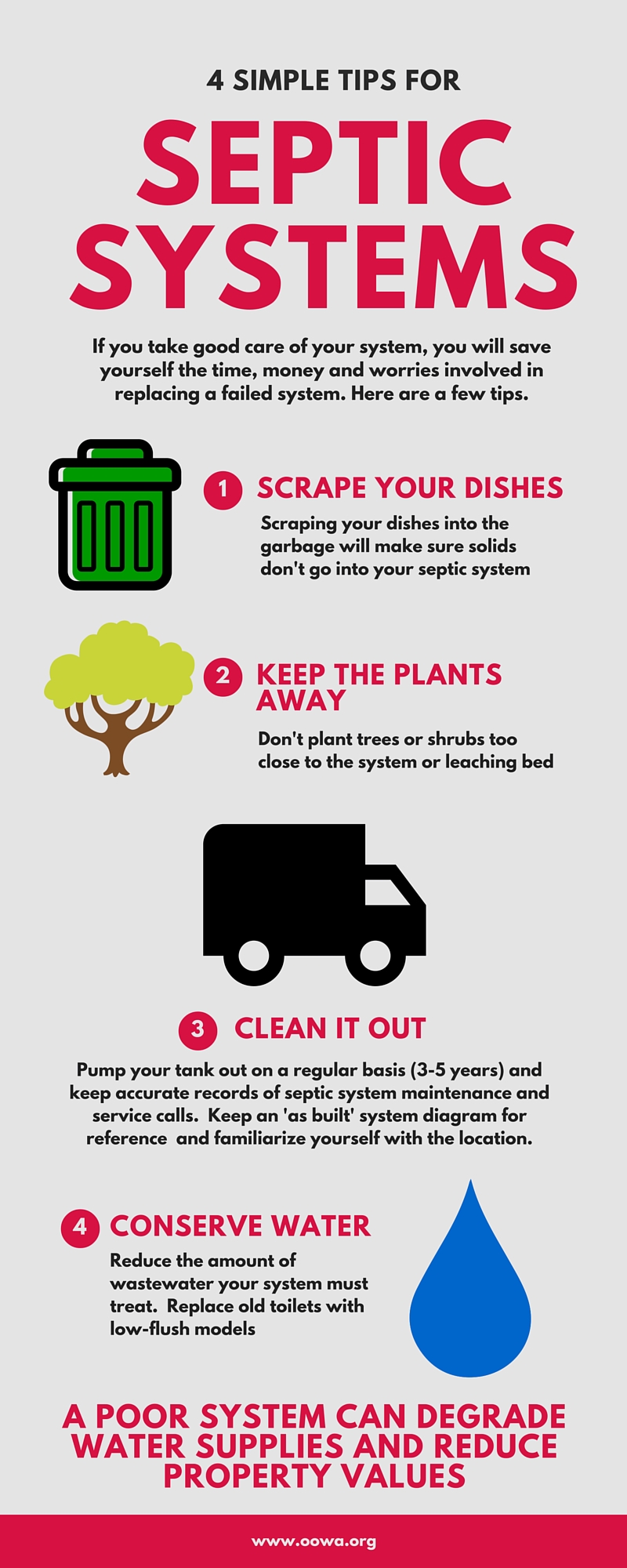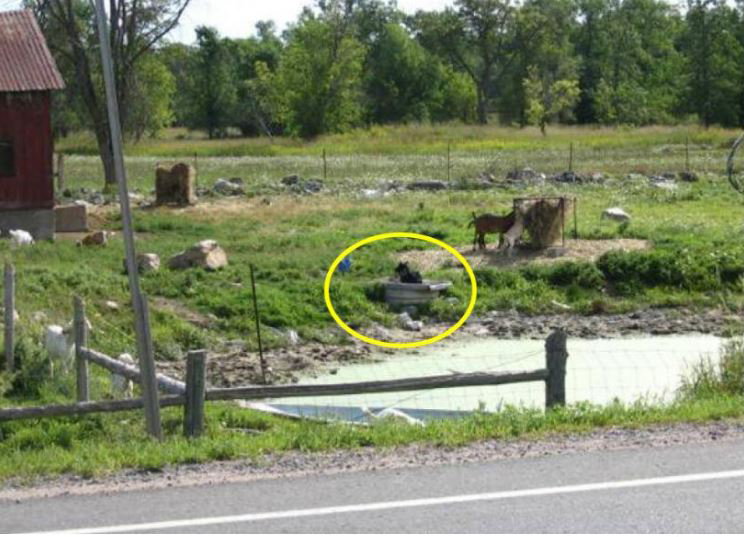- Home
- Resources & Programs
- Cottage Owner Resources
Shoreline Planting
Information about preserving and planting on Muskoka's shorelines
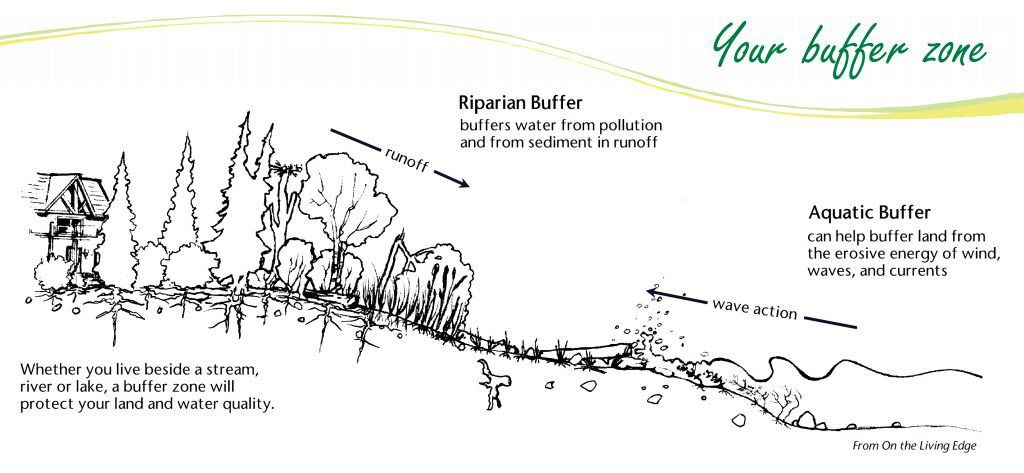
Protecting your waterfront investment
Ideas for your shoreline 'Insurance Policy'
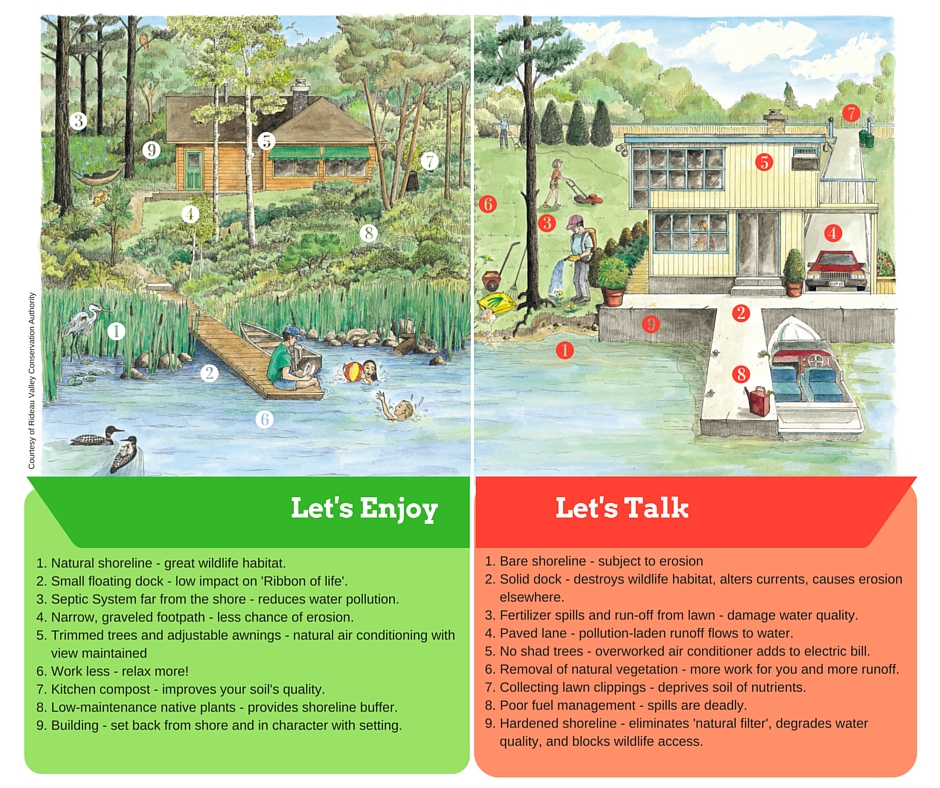
Caring for your septic system in Muskoka from the Best Practice series
|
|
Picture from Wells Only of Muskoka | Well wise tipsIs this what a good well should look like? – NO! We all understand that we need to do a bit of maintenance on our car in order to keep it running properly, but most people don’t recognize that your water well also needs regular maintenance. Based on results from outreach programs, it has been shown that 89% of wells across Ontario are in need of repair. Wells in Ontario are aging; there are 10, 000 – 20,000 new wells installed every year, but the majority of homeowners have wells that were installed before provincial standards were put in place. Well owners need to understand what to do to keep their wells in good working order and how to ensure that their water is safe and sustainable. Wells should be finished above ground to keep surface water and debris from entering through the top of the well. The area around the well needs to be managed to protect the structure and the water supply. Many people don’t like the look of their well so they try to disguise the well by putting a structure over it, by altering the well or by growing gardens or bushes around the well. It is really important to recognize that there is a connection between the well itself and the water quality that you can expect. Many times I have removed structures or tarps placed around wells only to find that mice, snakes or other littler critters have created a home directly on top of or adjacent to the well. I have also often come across critters that have fallen directly into the well. You need to keep an eye on your well and remove anything that could encourage critters to move in and possibly impact your water supply. Another important way to keep an eye on your water supply is by testing your water regularly. The Ministry of Health suggests testing for bacteria through their complimentary service 3 times a year. This is a good recommendation. However, a number of people have told me that they think that this complimentary test screens for a wide variety of impurities. That is not the case. If you want to understand what other impurities might be in your water you need to specifically test for them. For example, nitrate and sodium are two other impurities that have commonly been found in rural water supplies. If you have an old well on your property, you need to have a licensed contractor plug and seal the well. Wells must be maintained or properly decommissioned. Well contractors use special sealants and machinery to ensure that the old well will no longer be a structural risk or a conduit that could impact the quality of groundwater. For more information on how to care for your well check out the Ontario Ground Water Association website. by Mary Jane Conboy, Hydrogeologist for the Ontario Federation of Agriculture |
Take care of your lake
Clean, clear lakes start with each one of us caring for the water right around our property. By following these suggestions, you can help keep Muskoka's water clean forever.
NUTRIENT OVERLOADING The nutrients that we add to the lakes- especially phosphorous- are a major water quality problem. These extra nutrients cause excessive plant growth and the algae build-up you see on your boat's hull and along shorelines. If we don't cut down on nutrient loading, we'll have cloudy water, unpleasant tastes and odours, and a lot fewer fish. |
|
| DO |
|
| DON'T |
|
SEPTIC SYSTEM MAINTENANCE Private septic systems can be major contributors of disease-causing microbiological contamination. Keep your system in shape. |
|
| DO |
|
| DON'T |
|
BIODEGRADABLE PRODUCTS Biodegradable means that common bacteria in septic systems, soil and water will break down a substance to its original elements over a period of time. So, buying biodegradable soaps, shampoos, detergents and other products is a step in the right direction. However, the biodegradable label doesn't mean that the substance is completely non-polluting and it's no guarantee that the elements left after the break-down are totally harmless to the environment. |
|
| DO |
|
| DON'T |
|
TOXIC MATERIALS The nature of the Muskoka landscape means that almost any improperly handled toxic materials will eventually end up in the water. Common sense and caution are the best defense. |
|
| DO |
|
| DON'T |
|
Lifestyle makes the difference
| Low Phosphorus Lifestyle | High Phosphorus Lifestyle |
| Human Waste 535 G | Human Waste 535G |
| No Dishwasher 0 G | Dishwasher using powdered detergent once a day 650 G |
| No Fertilizer 0 G | Lawn fertilized once a year using 10% each nitrogen, potassium and phosphorus 1960 G |
| Trees not cut down 20 G | Lot cleared of trees 30 G |
| Use of phosphate -free household products 20 G | Uses Household products containing phosphates regularly 180 G |
| Total phosphorous 575 G | Total phosphorous 3355 G |
For more information on the State of the Lakes in the District Municipality of Muskoka contact the Planning and Economic Development Department, Bracebridge, ON. P1L 1N3 Ph. (705) 645-2231
Bubblers
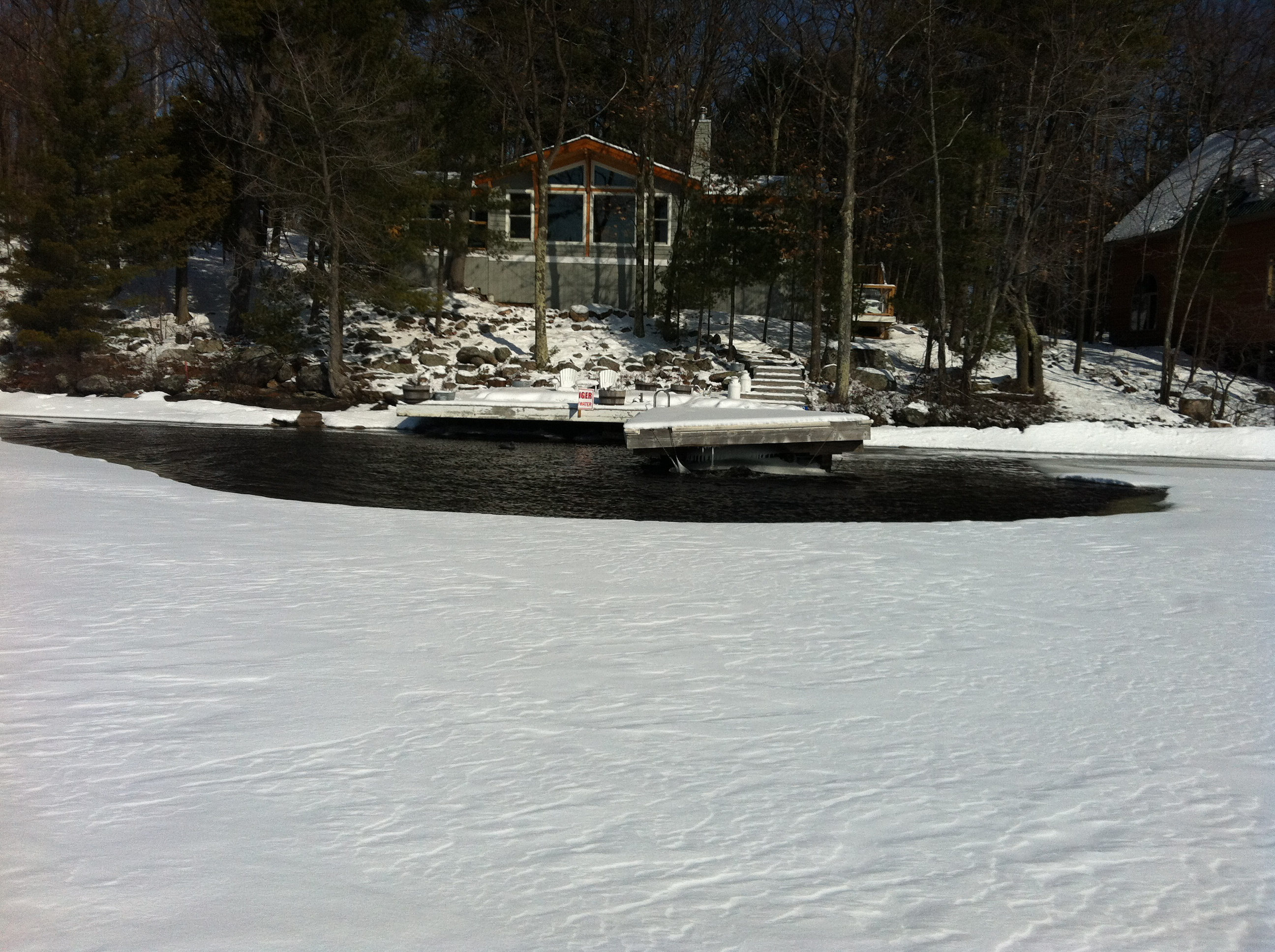 Bubblers are meant to keep ice away from the dock so when the water or ice level drops, the ice doesn’t pull on the structure tearing boards or causing cribbing to shift. Keeping ice ten feet from your dock is sufficient to avoid damage. Unfortunately, too many bubbler systems create areas of open water that far exceed what is necessary, thereby creating [resulting in] a hazard to people and animals.
Bubblers are meant to keep ice away from the dock so when the water or ice level drops, the ice doesn’t pull on the structure tearing boards or causing cribbing to shift. Keeping ice ten feet from your dock is sufficient to avoid damage. Unfortunately, too many bubbler systems create areas of open water that far exceed what is necessary, thereby creating [resulting in] a hazard to people and animals.
It is not widely known that there is legislation governing the use of bubblers that create openings in the natural ice. The Navigable Waters Protection Act defines two types of bubblers. Both types of bubblers cause warmer bottom water in the winter to be lifted up to the cooler surface water. The first is a system of pipelines on the bed that inject air or water into the water column and creates turbulent waters rising around the dock preventing the formation of thick ice. Pipelines resting on the bed of the water or suspended in the water column may need approval under this act. The second type is a fan that is suspended in the water column and circulates the naturally warmer water upwards. Temporary fans that are suspended in the water do not require approval under the act. Property owners should check with Transport Canada before installing any type of bubbler system.
For your information however, the action of safeguarding the ice and the open water that is created comes under the Criminal Code of Canada (excerpt):
Duty to safeguard opening in ice
263. (1) Every one who makes or causes to be made an opening in ice that is open to or frequented by the public is under a legal duty to guard it in a manner that is adequate to prevent persons from falling in by accident and is adequate to warn them that the opening exists.
(3) Every one who fails to perform a duty imposed by subsection (1) is guilty of
- manslaughter, if the death of any person results therefrom;
- an offence under section 269, if bodily harm to any person results therefrom; or
- an offence punishable on summary conviction.
Unlawfully causing bodily harm
269. Every one who unlawfully causes bodily harm to any person is guilty of
- an indictable offence and liable to imprisonment for a term not exceeding ten years; or
- an offence punishable on summary conviction and liable to imprisonment for a term not exceeding eighteen months.
What does this mean?
According to OPP Sergeant Larry Butterfield, it is not a criminal offence to operate a bubbler and there is no law that defines what is “adequate to prevent persons from falling in by accident and is adequate to warn them that the opening exists.” This means there is nothing the police can do about excessive bubbling, or lack of cautionary warnings. However, in the event someone is fatally injured a charge of manslaughter may be brought forward if, in the opinion of the investigating officer(s), a charge is warranted.
There is also the question of liability if someone suffers bodily harm. Property owners, contractors and/or property managers who have installed and/or maintain the bubbler system can be equally vulnerable to civil litigation. Conversations with a local insurance provider revealed that any incident would be reviewed independently and liability insurance coverage for damages awarded by a civil court may not apply. However, for the insurance companies, it is challenging situation. On one hand, the use of bubblers prevents high cost payouts for damage caused by ice (although not all insurance companies provide this coverage). On the other is the potential risk for personal injury claims. The onus is clearly on the property owner to fully understand their insurance policy coverage and use their best judgment when deciding whether or not to install a bubbler system.
Use common sense.
In a recent article in Cottage Life Magazine, Bob Island, Publisher, Snowmobile Central Ontario Magazine suggested there are steps that can be taken by property owners to reduce their liability. Signage that designates “Danger: Open Water” that can be easily read from a distance and an amber flashing light that is visible in the dark. (Some cottagers use red lights to indicate open water; however, in the dark, these lights can be mistaken for the taillight of a snowmobile, so Bob cautions against those). Install timers and thermostats to minimize impact, and reduce costs. And once the water level is lowered in early March, bubblers can be turned off.
The bottom line is this. There is no law against operating a bubbler, there is no law regarding what is adequate warning and there is no legal means to control the interference with lake access that often results from excessive bubbling. However, there could be serious criminal and civil implications if someone gets hurt or dies.
Exercise good judgment, know your coverage and be respectful of everyone who uses or plays on the ice in the winter.

